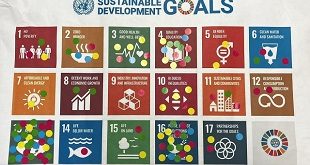
COMMENT: By Michael Wanyama
Success, challenges of funding higher education institutions through student loan scheme
It is now three years since the establishment of the student loan scheme in 2014 in Uganda. The idea of the student loan scheme was propelled by His Excellency, the President of the Republic of Uganda in 2011 and this was fully elucidated on in his manifesto campaign programme. As a visionary leader, he had noted that many brilliant and qualifying students were unable to raise the necessary fees to pursue tertiary education.
The Ministry of Education and Sports picked up the idea and worked closely with the members of Parliament to put up a legal framework.
The idea of increasing access to Higher Education was also well anchored on the Government White paper on education policy reforms of 1992 that emphasised the need to increase access to Education for Economic and Social transformation.
In addition the National Development Plan II (NDP) and the Uganda vision 2040 emphasised a transformed Ugandan Society from a “Peasant to a Modern and Prosperous Country within 30 years” and builds on the progress that had been made in addressing the strategic bottlenecks that have constrained Uganda’s socio-economic development since her independence The second National Development Plan 2015/16-2019/2020 theme is also “Strengthening Uganda’s Competitiveness for Sustainable Wealth Creation, Employment and Inclusive Growth”.
All the policy interventions proposed by the NDP are anchored on developing human capital with the relevant skills to champion the economic growth of the nation and this is what the Student Loan Board is out to support.
To date the Government of Uganda is supporting 3,811 students in both Public and Private (Chartered Universities) and other tertiary institutions. A total of 3,411 are pursuing undergraduate programmes while 400 are doing diploma courses.
Most of the students on the Loan Scheme are pursuing programmes in agriculture, engineering, human medicine, nursing and midwifery, laboratory science, pharmacy and pharmaceutical sciences, animal sciences, and science education, including Petroleum and Geoscience Engineering, Statistics, Computer Science and Technology, Pure Sciences, Health Care management, and Special Needs Education.
While the majority of the beneficiaries are pursuing science programmes, some students who did Arts combinations are being sponsored to do Bachelor of Education with Special Needs and Bachelor of Special Needs. The Loans Scheme Board has been guided to focus more on science programmes in order to produce a critical mass of scientists who are still few in number whereas they are highly required to contribute to the economic growth of the country. They consider courses that will equip students with the skills necessary for national development. Courses that offer practical skills are more preferred to those that are more theoretical.
The Board is fully aware that humanity programmes are equally important and are currently discussing the critical ones that should be focused on in the beginning if funds allow. This shall be followed by wider consultation of the key stakeholders on the subject matter. The 400 students pursuing diploma programmes are spread all over other government tertiary institutions.
Due to limitations of funding, at present the financial support caters for Tuition fees, Functional fees, Research expenses, and Aids and Appliances for People with Disabilities (PDWs). The students meet costs of accommodation, meals, and scholastic materials.
However, the law that established the scheme recognises that some students may find difficulties in raising funds to meet other non-pedagogical expenses and allows the Board on case by case basis to determine such costs for funding. The partial loan is meant to ensure that a beneficiary does not get huge loans that may be a great burden to pay back. Besides, the funds allocated to the Board can now be spread to a wide continuum of students to benefit from.
 The Independent Uganda: You get the Truth we Pay the Price
The Independent Uganda: You get the Truth we Pay the Price



